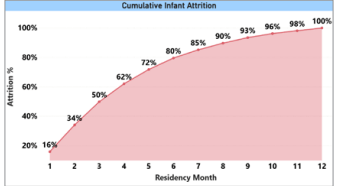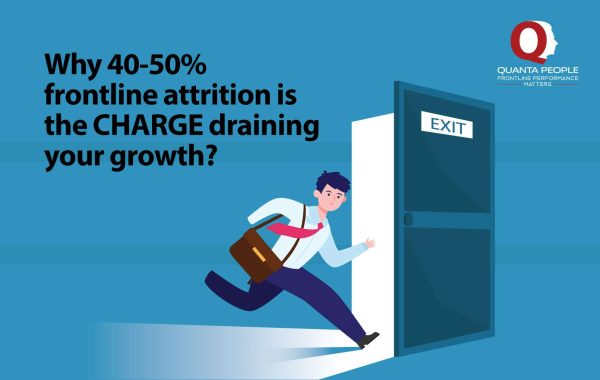
How to calculate the cost of wrong hire?
The Synopsis: Cracking the Frontline Hiring Code
A leading home loan provider approached QP for analytics on their frontline performance.
They were facing severe challenges with attrition, especially of their off-role employees in the system.
Despite a strong brand and steady business growth in the housing market, the company was struggling to bring in employees who could stay and perform consistently during their tenure.
Their recruitment team had an excellent turnaround time, but the quality of hires and incumbents’ ability to deliver was inconsistent.
They wanted to understand what truly defined a “dream employee” in their context and how to replicate that profile in future hires.
The Challenge
Attrition was one of the biggest challenges in the organisation. The problem was compounded by:
- High infant attrition and low productivity: Many new hires were leaving within the first 6 months, and the average tenure of an employee in the last 2 years was only 3.8 months. Infant attrition was very high at 80%, and 25% of employees were zero performers from joining to exit.
- High cost of wrong hire: Each wrong hire was a loss of revenue and opportunity. The cost of one refill due to underperformance (excluding hiring, BGV, and training costs) was ₹89,463.

The company needed a way to go beyond resumes and scientifically identify who would thrive in their organisation.
The Solution
QP deployed its patented TMI Plot to identify the “dream employees”.
The definition of a dream employee was established, and candidates were filtered when they matched this success profile.
The process was executed through:
- Data Mapping: Collected demographic data such as age, gender, experience, past relevant experience, educational qualification, resume source, geography, supervisor details, and performance data of dream employees.
- Pattern Discovery: Identified key demographic traits that had a strong correlation with those of the dream employees.
- Actionable Hiring Blueprint: Converted insights into a hiring scorecard, enabling recruiters to filter candidates who matched the success profile while avoiding high-risk traits.
QP worked closely with the client’s data analytics team to bucket attributes into must-haves, desirables, and clear rejects.
For instance, QP’s analysis between Jan 2023 to Dec 2024 revealed that non-graduate hires consistently underperformed. This insight was validated against 5 years of historical data and led to non-graduates being classified under the clear-reject category—ensuring early funnel filtration.
The Impact
The implementation of this strategy commenced in May 2025.
While outcomes are yet to be fully established, early signs are promising:
- Optimised funnel ratio
- Reduced screening time
- Improved quality of incoming resumes
Early trends suggest the approach is reshaping the hiring pipeline and laying the foundation for measurable long-term impact.


